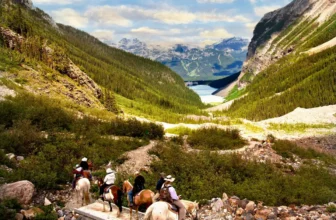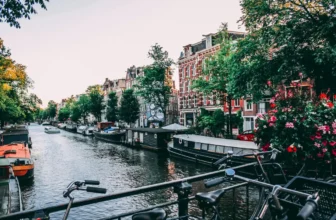
Antarctica is a remote and icy continent that holds many secrets just waiting to be discovered by brave adventurers, nature enthusiasts, or simply those who are just curious about the wonders of the world.
In this article, we deep dive into nine fun and fascinating facts about the beautiful, white continent that has captured and sparked the interest of many travelers.
Home of The Emperor Penguin
We know Antarctica to be the breeding ground and home to thousands of Emperor Penguin. These resilient creatures can endure extreme temperatures that sometimes reach a low of -40 degrees Fahrenheit.
It is truly a wonderful experience to witness these majestic creatures and their behavior, from huddling together for warmth, taking turns to incubate their egg to embarking on their epic journeys in the icy waters that surround the continent.
You can experience the wonders of these Emperor penguins firsthand by embarking on an expedition with Quark Cruises to Antarctica. You will get up close and personal like nowhere else.
The Coldest Place On Earth
Antarctica officially holds the record for being the coldest place on Earth. In the summer of 1983, the temperatures plummeted to -128.6 degrees Fahrenheit at the Antarctic Research Institute, Vostok Station.
That is absolutely bone chilling. The extreme cold temperatures make it a very challenging and unique environment but we need it for the preservation of the ecosystem.
One has to understand the significance of preserving its fragile ecosystem when considering the conditions that life on this continent has to endure in the coldest place on the planet.
The World’s Largest Desert
Antarctica is also the largest desert in the world, contrary to popular belief. With approximately 14 million square kilometers it by far surpasses that of the Sahara Desert.
But what classifies it as a desert? For starters, it has low precipitation and limited vegetation and also the diverse range of species that have over time adapted in order to survive in this extreme environment.
The Mysterious Blood Falls
In the McMurdo Dry Valley is a captivating natural phenomenon called the Blood Falls. The falls appear to flow with blood-red arctic snow and water. What makes it so red is the iron oxide-rich saltwater that emerges from beneath the Taylor Glacier.
The Blood Falls truly showcases the remarkable chemical and geological processes that occur in Antarctica. We are reminded of the importance of preserving this environment for scientific research and for exploration.
The Ozone Hole
Antarctica is infamous for the Ozone Hole, this is an area made up of a depleted layer in the ozone layer of the earth’s stratosphere. This phenomenon directly results from man-made chemicals, such as chlorofluorocarbons also known as CFCs.
If you wish to learn more about the ongoing effort to help protect the ozone layer and the importance of preserving the well-being of our planet, you can explore various resources.
Scientific Institutions and Research Institutions like The National Oceanic Atmospheric Administration (NOAA), NASA, and the World Meteorological Organization (WMO), conduct research on the ozone layer and its protection. You can research their websites and their publications that provide reports, scientific data, and reports on ongoing efforts in preservation.
The Transantarctic Mountains
The Transantarctic Mountains divide Antarctica into two distinct regions East and West Antarctica.
The beautiful, majestic mountains offer breathtaking vistas and shape the unique climate and geography of this vast continent. The Transantarctic Mountains offer some of the best places to go snowboarding or skiing in the world.
The Dry Valley
Receiving less than 2 cm of precipitation per year Antarctica’s Dry Valley is among the driest places on the earth. Some say that these valleys lack snow and ice and simply resemble a Martian landscape.
For many years scientists have studied these landscapes to gain insights into the possibility of life on other planets while unraveling the secrets of planet Earth’s own history.
The study of the Dry Valley provides us with valuable information not only about our own planet but also offers us a unique opportunity to understand the potential for life beyond our planet Earth and the conditions that may exist on other planets.
The Northern & Southern Lights
The Northern Lights known as Aurora Borealis and the Southern Lights known as Aurora Australis are all natural light displays that occur in the polar regions of the Earth.
The Northern Lights appear in the Northern Hemisphere and the Southern Lights are visible in the Southern Hemisphere. These beautiful, unique displays of light are a unique natural wonder.
The best time to see these captivating light displays is during the winter months from September to March and the same applies to the Southern Lights in the Southern Hemisphere.
The Treaty of Antarctica
In 1959, 54 countries signed a treaty known as the Antarctic Treaty. Whereby designating Antarctica as a scientific preserve and banned any form of mineral mining, military activity, and nuclear testing on the continent.
This way they preserve the protection of this pristine continent for future generations. You can learn about the ongoing efforts to preserve this scientific and peaceful haven by research institutions such as the Australian Antarctic Division (AAD), the British Antarctic Survey (BAS), and the United States Antarctic Program (USAP.)






